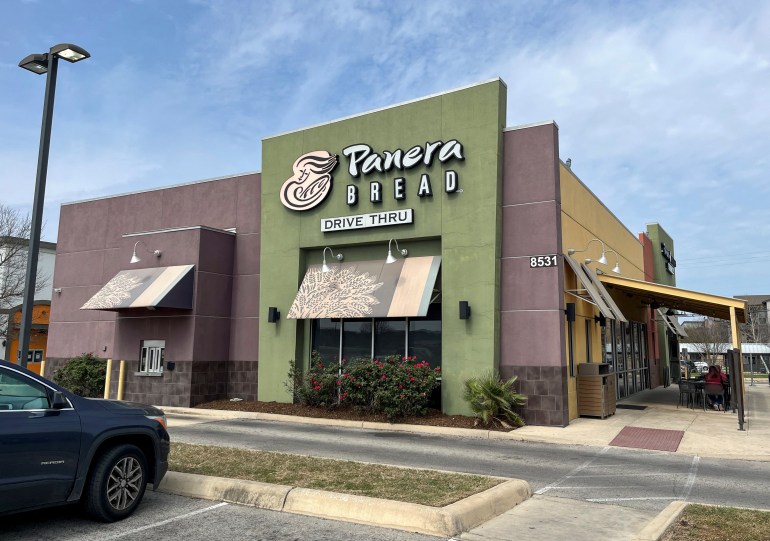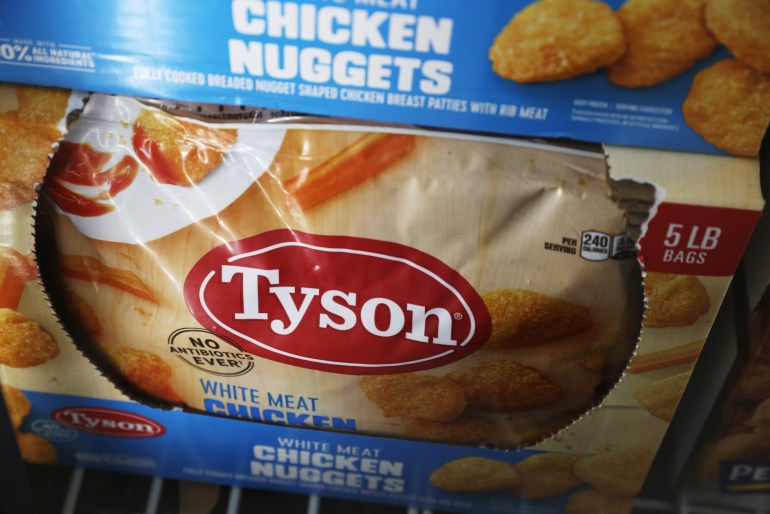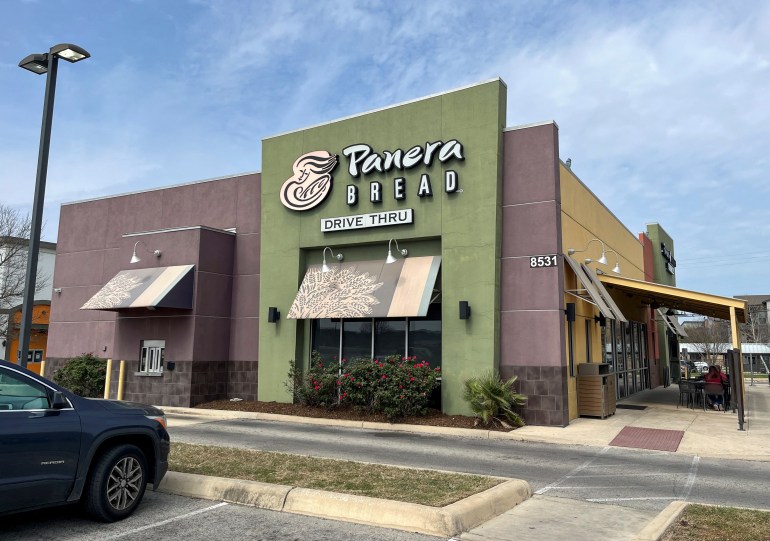Chick-fil-A is the latest restaurant chain in the United States to drop its promise of “no antibiotics ever” in its chicken products.
Several major companies, such as Tyson Foods, had made such a pledge but have shifted to excluding only antibiotics that would interfere with the effectiveness of human medicine.
Antibiotic-free meat commitments were intended to help prevent antibiotic resistance in humans, which has been linked to the rampant use of such drugs in livestock production. However, animal welfare and supply issues have created challenges.
Why have these policies shifted, and what does this mean for people’s health?
What has Chick-fil-A announced?
Chick-fil-A, which made its “no antibiotics ever” pledge in 2014 and fully implemented it in 2019, said in March that it will allow certain antibiotics to be used by its chicken suppliers from this spring.
The fast food chain is known for its chicken sandwiches and waffle fries. It also sells nuggets, chicken strips and beverages.
Suppliers will be allowed to administer antibiotics to chickens in the event that “the animal and those around it were to become sick” but only if those drugs are not important in human medicine, the restaurant said in a statement.
The initial commitment not to use antibiotics was prompted by consumer research the company undertook that revealed strong interest in how food is made and where it is sourced with particular interest in the use of antibiotics.
At the time, Dan Cathy, president and CEO of Chick-fil-A, also said offering antibiotic-free chicken was “the next step” in the company’s commitment to “using the highest quality ingredients”.
The policy shift, which Chick-fil-A said is intended to “maintain supply of the high-quality chicken you expect from us”, will apply to chicken served in its restaurants in the US, Puerto Rico and Canada. It plans to expand to the United Kingdom next year.
In a statement to the Reuters news agency, the company also said the policy change was due to challenges it foresees in sourcing chicken that “meets our rigid standards”.
Why and how are livestock given antibiotics?
Food providers say certain antibiotics are necessary to protect their animals from disease.
Allowing the use of antibiotics also means having a much wider choice of suppliers. Panera Bread, a bakery-cafe chain in the US and Canada, had a “no antibiotics ever” policy that constrained its pork supply options to just 5 percent of the market. It has now loosened its standards for food sourcing, internal documents seen by Reuters revealed.
The chain has directed its US stores to remove several food sourcing signs and artwork for its pork and turkey options, including “no antibiotics ever” and “vegetarian fed” wording. The new standards are expected to shave an estimated $21m off the company’s annual costs.

Using antibiotics in livestock promotes rapid weight gain and improves profitability, according to experts.
Shady Amin, associate professor of biology at New York University Abu Dhabi, explained that livestock are commonly given “sub-therapeutic” doses of antibiotics, which are typically lower than the amount that would be administered to treat a disease. Their use can increase yields whether it is meat or milk, he said.
Faster poultry growth, particularly for in-demand food items such as large broiler chickens, enables suppliers to keep up with consumer demand. If antibiotics are not used, the cost of chicken by weight increases.
“The issue is that antibiotics are generally very cheap,” Amin said. “If administering them in either therapeutic or sub-therapeutic doses leads to increased production and less animal death and infection, it all means more profit.”
One bacteria that has frequently been found to be resistant within poultry meat is Campylobacter. Its resistance to antibiotics has been detected across North America, Europe, Japan and the Middle East, said Ali Sultan, professor of microbiology and immunology at Weill Cornell Medical College in Qatar.
How does using antibiotics in livestock harm humans?
Through overexposure to antibiotics, harmful bacteria develop a resistance to them over time. The concern is that, eventually, certain antibiotics could become entirely ineffective.
These resistant bacteria would then remain in the intestines of animals where they would continue to grow.
If uncooked meat of such animals is consumed, harmful bacteria could also enter the human gut, causing illness that then cannot be treated with antibiotics.
In 2012, for example, half of 20 samples of chicken from supermarkets across Germany were found to have resistant bacteria, suggesting that the chicken had been treated with antibiotics.
After that report, Germany’s Federal Ministry of Food and Agriculture announced that veterinarians would be restricted from giving farm animals antibiotics used in human medicine and would have to adhere to permitted dosages.
Another study by Germanwatch, an advocacy group for sustainable development, found in 2019 that more than half of 59 meat samples from the country’s four largest slaughterhouses had antibiotic-resistant germs.
Similarly, in 2019, Dhaka University in Bangladesh conducted extensive tests that found antibiotics present in five different brands of milk as a result of overuse of the drugs in cows.
Amin said that when bacteria are resistant to antibiotics, many are also resistant to a family of structurally related antibiotics. This means those bacteria may end up becoming resistant to antibiotics that are used to treat human infections, not just those for poultry.
Therefore, restricting the use of antibiotics in livestock to those “not important to human medicine” may not be enough to prevent harm to humans, he warned.
Another way resistant bacteria can spread from animals to humans is through the soil, according to Amin.
When the animals defecate, resistant bacteria can enter the soil and end up contaminating our food or passing on their resistant genes to other bacteria.
“The extent of infection by poultry meat carrying resistant bacteria depends on the ingested dose, virulence of the bacteria, immune status of the individual and the cooking method,” Sultan said.
Children below the age of five, immunocompromised people such as the elderly, those living with HIV/AIDS or being treated for cancer may be more at risk if infected with resistant bacteria.
Complications can affect a range of organs from the digestive system to the heart, Sultan added.
According to the US Centers for Disease Control and Prevention, antibiotic resistance poses an urgent global public health threat. It led to about three million infections and 48,000 deaths in the US alone in 2019.
In 2019, as many as 3,500 people around the world died every day from antimicrobial-resistant infections, according to research published by the Lancet medical journal.
Do some countries restrict the use of antibiotics in livestock?
Several countries such as the US, Ecuador and Namibia have restricted the use of antibiotics in livestock.
Their regulatory authorities and agricultural ministries have stated that the misuse or overuse of antibiotics when there is no pressing medical need could lead to harmful bacteria becoming resistant to antibiotics.
In 2022, the European Union also banned the preventive administration of antibiotics to herds of animals. Instead, antibiotics may be given to only sick, individual animals.
This means that the bloc may also reject imports of live animals and animal products that have undergone fast growth through antibiotics, according to the World Animal Protection group.
Which other food companies have started using antibiotics again?
Over the past year, Tyson Foods and Panera Bread have reversed their pledges to maintain no-antibiotics policies in meat.
Tyson Foods, a major poultry supplier in the US, reintroduced certain antibiotics into its chicken supply chain last year, leaving behind the antibiotic-free chicken commitment it made in 2017.
Tyson spokesperson Karen Christensen said this change was “based on scientific research and industry learnings”.
The shift was limited to antibiotics known as “ionophores”, which are unrelated to human medicine and are meant to “improve the overall health and welfare of the birds in our care”, Christensen said.
Ionophores have typically been used to promote growth in livestock.
Other fast food chains, including Burger King and Popeyes, also adhere to the rule of “no antibiotics important to human medicine”.

What are the food standards for antibiotics in poultry?
The US Food and Drug Administration (FDA) mandates that all antibiotics must be clear from a chicken’s system before it enters the food supply chain.
To ensure this, poultry farmers must put birds meant for consumption through a “withdrawal” period before they may be slaughtered, ensuring that no antibiotic residues are present in the bird’s system.
The US Department of Agriculture enforces compliance with this requirement through random sampling of poultry at slaughterhouses.
Data from this monitoring programme indicate a very low percentage of residue violations, the department said.
Livestock owners are also advised by the FDA to use antibiotics only when necessary to manage illness in animals with a focus on administering vaccines to reduce the future need for antibiotics.
Is all this enough to keep food safe?
Some experts do not think so. Amin said using antibiotics to avoid infections is a cheap fix that “can create a bigger problem for us in the long run”.
He added that the fundamental practices of raising chickens should be changed. This includes having free-roaming chickens instead of confining them to cramped spaces where infections can spread quickly.
Chickens are typically also fed a limited diet. A less homogenous diet is essential to training their immune systems, Amin said.
Read More: World News | Entertainment News | Celeb News
Aljazera








